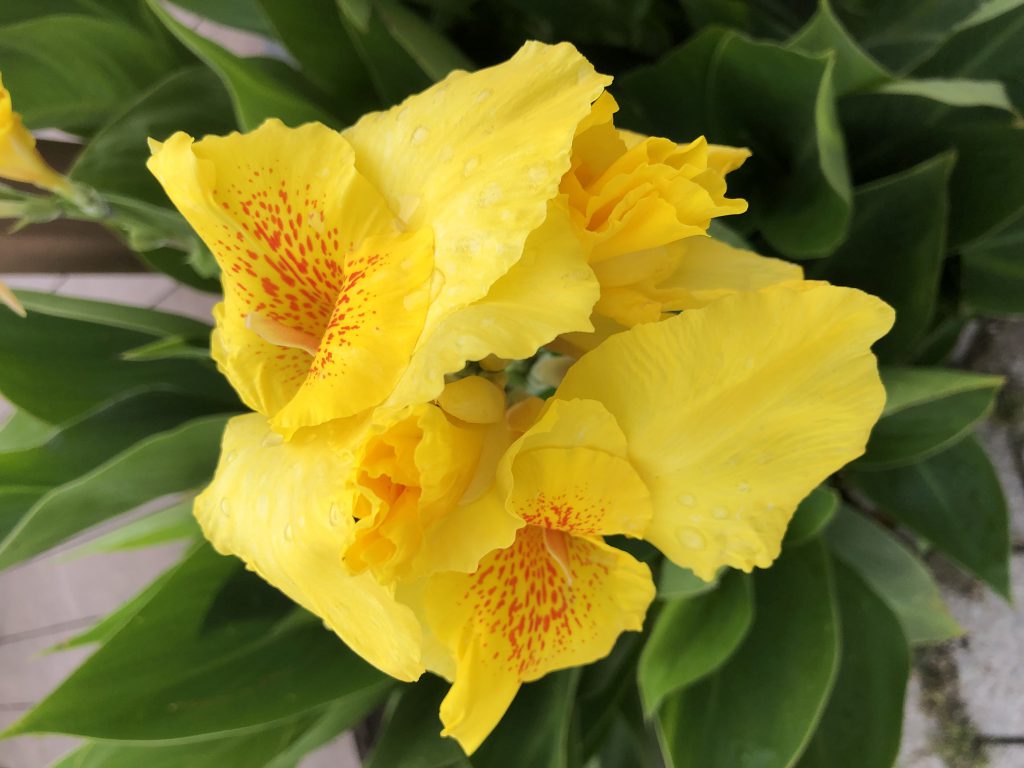
Canna blooms bright flowers vigorously through the large leaves under the scorching sun of midsummer. In the canna flower, the part that looks like a large petal is actually the part where the stamens have changed like petals, and the real flower of canna is very small and inconspicuous. The original species of canna is found in America and the tropics, and after Columbus discovered the Americas, it was brought to Europe with corn, sunflowers, cacti, and cosmos. Most of the current varieties are varieties produced by repeating crossing between various original species in America, France, Italy, etc. from around 1850, and are called Hanakanna. The flowers are large and the color of the flowers is also varied. On the other hand, the leaves of canna are also splendid and spectacular, and in Europe it seems that the focus is on leaves rather than flowers. In Asia, the red color of canna is the color of the blood shed by the Buddha, and canna is considered a noble flower.
カンナは真夏の炎天下、大きな葉の間から鮮やかな花を元気に咲かせます。カンナの花は、大きく花弁に見える部分は実は雄しべが花弁のように変化した部分で、カンナの本当の花はとても小さくて目立ちません。カンナの原種はアメリカや熱帯地方に見られ、コロンブスがアメリカ大陸発見のした後に、トウモロコシやヒマワリ、サボテン、コスモスなどと同じくヨーロッパに持ち込まれました。現在の品種の多くは、1850年ごろからアメリカ、フランス、イタリアなどでさまざまな原種間で交配を繰り返して作出された品種で、ハナカンナと呼ばれています。花が大きく、花色も変化に富んでいます。一方カンナの葉も立派で見応えがあり、ヨーロッパでは花よりむしろ葉の方に感心が高いようです。アジアでは、カンナの赤い色は仏陀の流した血の色だとして、カンナは高貴な花とされています。
